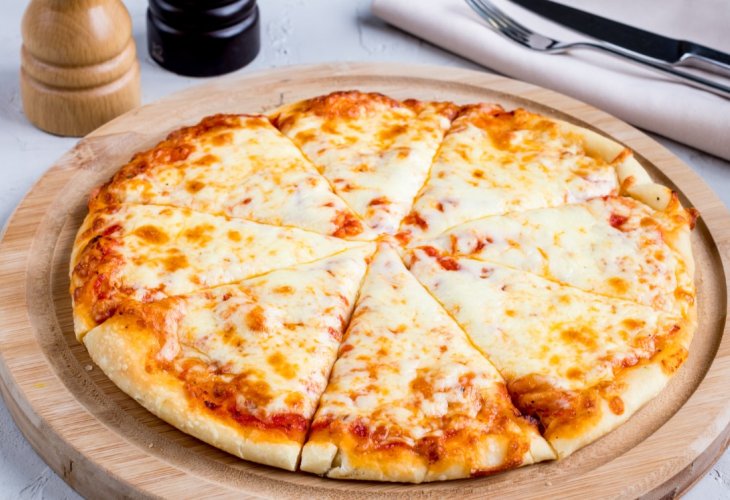Jewish Law
The Halacha of Pizza: Is It “Mezonot” or “Hamotzi”? Understanding the Correct Blessing According to Jewish Law
Discover how Sephardic and Ashkenazic authorities rule on the proper blessing for pizza and learn when the amount you eat changes the blessing to Birkat HaMazon

As explained in the Shulchan Aruch (Orach Chaim 168:7), there are three categories of “pat haba’ah b’kisnin” — baked goods that are made like bread but whose blessing is “Borei Minei Mezonot” instead of “Hamotzi.”
The three types are:
Filled doughs (like pastries with sweet fillings).
Sweetened or flavored doughs (kneaded with fruit juice, honey, or milk).
Crispy, cracker-like doughs that are chewed and crumble easily.
Where does pizza belong? Is it considered a type of pat haba’ah b’kisnin — like the second category (“kneaded with sweet liquids”), so that its blessing is Mezonot? Or is pizza considered regular bread, requiring Hamotzi even for a small amount?
The General Rule
According to the Shulchan Aruch, if the taste of the sweet liquids or fruit juice can be clearly felt in the dough, the blessing is Mezonot. This is the Sephardic custom.
According to the Rema, followed by Ashkenazim, Mezonot is recited only if the majority of the liquid used is fruit juice or milk (not water). By “fruit juice,” we refer to 100% natural juice — the water added to concentrate or flavoring does not count as “fruit juice.”
This distinction is mentioned by Rav Shlomo Zalman Auerbach and Rav Shmuel Halevi Wosner shlit”a (Shevet Halevi 9:44), as cited in Vezot HaBerachah, chapter 3.
The Blessing on Pizza
A. The Opinion that Pizza Requires “Hamotzi”
Several authorities rule that the blessing on pizza is Hamotzi, without even considering whether the dough is sweetened or not.
The reasoning is that pizza is eaten as a meal, not as a snack or dessert. The concept of pat haba’ah b’kisnin applies only to foods eaten casually or for enjoyment, not for satiation.
This approach is found in Sha’arei Tzion quoting the Sephardic Chief Rabbi, Rav Shlomo Moshe Amar, and is consistent with the Maggid Mishneh (Hilchot Berachot 2:9), who explains that baked goods are only considered Mezonot when eaten as a light, incidental food.
As pizza is generally eaten as a main meal, it is considered bread, and the correct blessing is Hamotzi followed by Birkat HaMazon.
B. The “Sweet Dough” Argument
In Halacha Berurah (vol. 8), it is discussed whether pizza or sweet rolls are comparable to the “pashtida” (pie) mentioned in the Shulchan Aruch (168:17).
He writes: “In our time, some prepare pizza dough with mostly fruit juice or milk and therefore claim its blessing is Mezonot. However, many authorities hold that even when fruit juice is the majority, the taste must be distinctly noticeable in the dough. Rav Bentzion Abba Shaul (Berachot Hashem vol. 2) also ruled that the blessing on pizza is Hamotzi and that one must recite Birkat HaMazon afterward (see also Ravvot Ephraim 7:68).”
For Sephardim:
The standard pizza found today has the blessing Hamotzi and requires Birkat HaMazon. This is because:
The dough’s sweet flavor is not noticeable.
Most pizza doughs are made simply from flour, water, yeast, and salt, without milk or fruit juice.
Tomato sauce or toppings do not change its status.
This is the clear ruling of Maran Rav Ovadia Yosef (Chazon Ovadia – Berachot).
Exception: If a homemade or factory-made pizza is known to be made with a dough that clearly tastes sweet — due to a significant amount of milk, honey, or juice, then the blessing would be Mezonot only if eaten as a snack. However, if one eats enough pizza to constitute a meal (shiur keviyat seudah), the blessing reverts to Hamotzi. (See also Or LeTzion II:12.)
For Ashkenazim:
There is a distinction:
If the dough is made from flour and water only, the blessing is Hamotzi (Mishnah Berurah 168:44; Vezot HaBerachah, ch. 3).
If the dough is made from flour and a majority of fruit juice or milk (not reconstituted, and in greater proportion than water), the blessing is Mezonot.
C. The “Meal Quantity” Rule
Regardless of the recipe, anyone who eats a meal-sized portion of pizza (approximately two regular triangular slices) must recite Hamotzi and Birkat HaMazon.
For small children, the quantity that defines a “meal” is smaller and may vary depending on their age and eating habits. (Vezot HaBerachah, ch. 3.)
Rabbi Shay Amar serves in the Halacha Department of Hidabroot.

